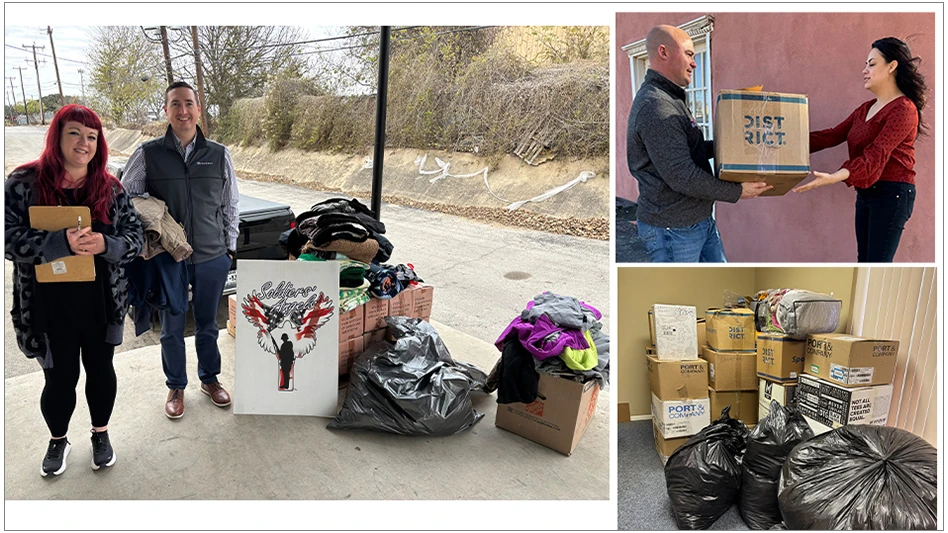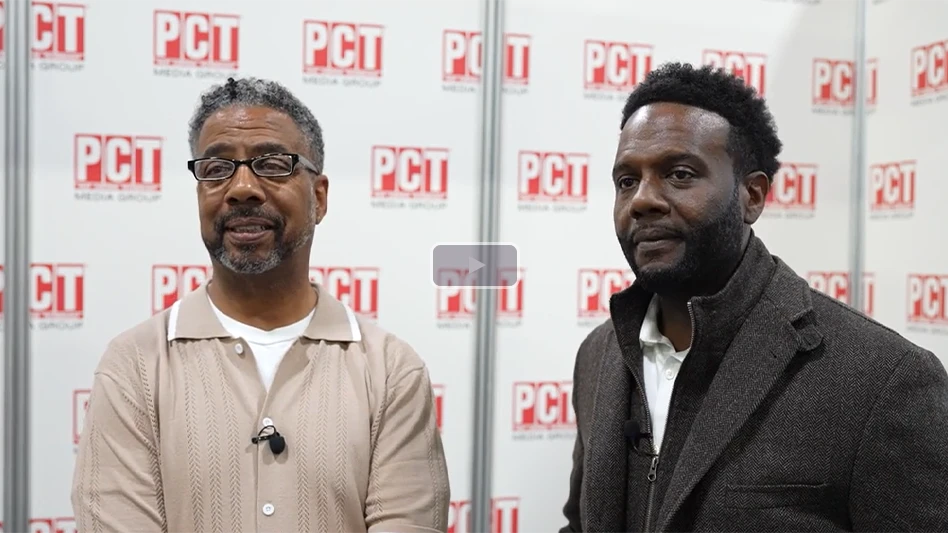WASHINGTON -- Reports of misapplications of methyl parathion by unlicensed applicators have again received media attention. In December, the television news program Impact, which airs Sunday nights on CNN, ran a story on the issue.
CNN correspondent Mark Feldstein filed the story that detailed several misapplications in Mississippi and profiled some of the victims of the unlicensed applicators. The piece included the story of 73-year-old Minnie Lou Rudd, who was killed after drinking pesticide that was stored in a milk jug. The pesticide was sold illegally to Rudd in an unlabeled milk container. According to the CNN report, Rudd confused the container of white poison with her groceries.
The report was critical of officials from both the state of Mississippi and the U.S. Environmental Protection Agency for weak laws and weak enforcement, thus allowing the unlicensed sale and application of pesticides, particularly “cotton poisons” such as methyl parathion. The report was particularly critical of the ease with which persons could obtain licenses for purchasing and applying the pesticide.
Feldstein interviewed several individuals who received licenses, but were subsequently convicted of illegally selling or applying the pesticide. One such applicator, Paul Walls, admitted to Feldstein that he learned little in the courses required for obtaining the license. “I didn’t hear a lot of what went on in the class because of my hearing,” Walls told CNN. Walls is partly deaf, according to the report.
Feldstein interviewed another applicator, Doc Eatman, who obtained a license despite the fact he claims to have trouble reading and writing. According to the report, Eatman did not take a test to qualify for the license but received one from Mississippi officials nonetheless. When Feldstein asked Eatman how the officials knew he was competent to handle the poison, Eatman responded, “I don’t know. It never came up.”
In response to the CNN report and other similar reports, the National Pest Control Association issued a statement condemning the indoor application of restricted use pesticides. Referring to Walls and Eatman, Rob Lederer, executive vice president of the NPCA, said, “These two men willfully misused an agricultural chemical not approved or developed for indoor use of any kind. NPCA strongly condemns this misuse of pesticides.” The NPCA has also asked media outlets to distinguish these types of applicators as unlicensed and not a part of the pest control industry. To date, this critical distinction has not been made by media reports, according to the NPCA. “Just as drug dealers are not pharmacists and people who highjack planes are not pilots, pesticide bootleggers are not pest control operators,” Lederer said.
AMERICAN CYANAMID PULLS SUBTERFUGE TERMITE BAIT
PARSIPPANY, N.J. -- American Cyanamid Company will not bring Subterfuge, its termite bait product, to the market at this time, the company announced.
“Variations in the formulation components were detected during the piloting phase of preparing commercial quantities of Subterfuge for market introduction,” said Eileen Higgins, business director for American Cyanamid’s Consumer and Pest Control Products Group. “As a result, the product was unable to consistently meet American Cyana-mid’s stringent quality requirements.”
Higgins said the company would continue its research efforts in developing a product portfolio with significant potential for the pest control market. “American Cyanamid remains deeply committed to the pest control industry,” she said. “We will continue to invest considerable financial and personnel resources to develop products with an excellent fit for the pest control market,” Higgins said.
PREMISE HOLDS UP IN USDA TRIALS
GULFPORT, Miss. -- New data from the USDA-Forest Service field trials shows Bayer Corp.’s Premise Insecticide is continuing to prove successful in concrete slab tests.
Premise provides non-repellent structural protection by establishing a treated zone in the soil. The product utilizes a chemical mode of action to kill termites, and, at lower concentrations, Premise increases termites’ susceptibility to diseases caused by naturally occurring bacteria and fungi, to eventually cause death.
In the USDA-FS field trials, Premise performed well under concrete slabs. At the NPCA’s 1997 convention in Minneapolis, Brad Kard, principal termite research entomologist for the Forest Service, discussed the performance of Premise in the trials.
“Premise has been doing very well under concrete slabs in Flor-ida, Arizona and South Carolina,” he said. “There have been no attacks on wood blocks under concrete slabs at rates of 0.05% or higher, even with moderate to heavy termite pressure. So far, Premise is protecting the test blocks.” The Mississippi test site has extremely high termite pressure. As previously reported by Bayer, the 0.05%-label-rate plots have had termite penetration. This continues in the fifth year with two of the 10 plots being penetrated. Only one penetrated plot had active termites present. According to Bayer, Kard continues to collect more detailed information, including wood damage ratings developed by the American Society for Testing and Materials for each test site.
INSECT-O-CUTOR CELEBRATES
60TH YEAR WITH CONTEST
STONE MOUNTAIN, Ga. -- Insect-O-Cutor is celebrating its 60th Anniversary of providing insect electrocutors to the industry. To mark this milestone, the manufacturer of flying insect control devices is searching for the “Oldest Operating Insect-O-Cutor.” To participate, PCOs are asked to find their oldest Insect-O-Cutor, record its serial number, and send the information to Insect-O-Cutor. The company will then send back a “contest return authorization.” All viable entrants must submit their Insect-O-Cutor unit for factory authentication. The entrant with the oldest Insect-O-Cutor will win the grand prize, a 1998 stainless steel, energy-efficient Insect-O-Cutor. In addition, the winner’s Insect-O-Cutor unit will be factory-refurbished. The contest ends April 30, 1998, and all unit submissions must be received by that date. Complete contest details and prize information is available on the Insect-O-Cutor Web site, at www.insect-o-cutor.com, under the “What’s New” page. Contest rules are also available by calling Insect-O-Cutor at 770/939-2835.
CSMA TO ASSESS
INDOOR EXPOSURE DATA
WASHINGTON -- The Chemical Specialties Manufacturers Association (CSMA) recently instituted a new program to address concerns about indoor residential exposure to pesticides. Named the Indoor Residential Exposure Steering Committee, the program was formed in response to requirements of the Food Quality Protection Act of 1996, which calls for review of exposure data relative to aggregate risk.
Established on Nov. 4 with the support of several companies including marketers and suppliers, the group will address non-dietary residential exposure to pesticides for which registrations and tolerances are in effect and to other pesticides that have common mechanism of toxicity with such food-use pesticides. Currently 15 companies are involved with the committee, said Dr. Ralph Engel, president of the CSMA.
An information data collection process will identify and characterize indoor residential non-dietary pesticide uses, develop a product-use database and identify relevant exposure monitoring data and predictive models. Dr. Engel said the process should take about a year. After developing the product-use database and predictive models, the next step is to conduct actual exposure testing.
Dr. Engel said the committee would seek input from the U.S. Environmental Protection Agency, as the resulting data of the studies would be supplied to the EPA. Study results would also be supplied to the other industries conducting similar pesticide tests. The committee is chaired by Jeffrey Pinkham of S. C. Johnson & Son Inc. William Perlberg, Hartz Mountain Inc., serves as vice chairman. Membership is open to companies interested in assisting in the process. For more information, companies may contact Susan Little, manager of the Product Ingredient Review program at 202/872-8110.
USDA HONORS BRENNER AS OUTSTANDING RESEARCHER
GAINESVILLE, Fla. -- The U.S. Department of Agriculture recently named research scientist Dr. Richard J. Brenner as one of three “Outstanding Senior Research Scientist of 1997.” Brenner, along with two other scientists, received a cash award and additional research funding.
Brenner is a research leader with the Imported Fire Ant and Household Insects Research Unit, a branch of the USDA’s Center for Medical, Agricultural & Veterinary Entomology. The department honored Brenner for “developing and leading a multi-disciplinary research program to enhance the environment and human health through pesticide reduction, risk assessment and precision targeting.”
Throughout his more than 20 years as a researcher in the field of medical entomology and pest management, Brenner has worked on a variety of ground-breaking projects. His research has led to the development of safer technologies for control of cockroaches and other insect pests. Brenner has also devoted considerable energy to the identification and mitigation of cockroach aeroallergens, which have been suspected of contributing to the higher number of incidences of asthma among inner-city children.
Brenner’s most recent research projects have involved the development of a standardized reduced-risk pest management strategy for the U.S. Department of Defense. The program focuses on controlling all pests in department deployments, equipment, warehouses and facilities, while adhering to government mandates of reducing the amount of pesticide used by 50 percent. The $1.1 million, 4-year project was an outgrowth of the Strategic Environmental Research and Development Program (SERDP), created by Congress, in cooperation with the Environmental Protection Agency. PCOs who contract to provide services for the Defense Department will have to follow the plan and adhere to its mandates, Brenner said.
Brenner is also involved with research to develop and demonstrate reduced-risk technologies using precision targeting strategies. The research has focused on cooperation with the private sector, pest management companies, and members of EPA’s Pesticide Environmental Stewardship Program. “The greatest benefit of what we are doing is going to be to the professional pest control industry,” Brenner said.
ORKIN GRANTS RESEARCH EXCELLENCE AWARDS
ATLANTA -- Orkin Pest Control recently announced the recipients of its 1997 Orkin Award for Research Excellence. The recipients were: Dr. Michael Rust, University of California Riverside; Dr. Gregg Henderson, Louisiana State University; Dr. Jeffrey Scott, Cornell University; Dr. Michael Potter, University of Kentucky and Dr. Colby Schal from North Carolina State University. Each award winner will receive a research grant and a plaque from Orkin.
“Orkin is pleased to honor those who continue to make contributions to the field of urban entomology. We recognize that the research being done by these individuals plays a crucial role in our continuing efforts to keep our services to homeowners as innovative and effective as possible,” said Dr. Harlan Feese, vice president of technical services for Orkin.
The awards are given for outstanding research practices within the structural pest control industry. Criteria for the grants include affiliation with an accredited university and significant contributions to the field of urban pest management.
NEW DIRECTOR AT EPA’S
PESTICIDE OFFICE
WASHINGTON -- Starting in February, Marcia Mulkey will serve as the new director of the U.S. Environmental Protection Agency’s Office of Pesticide Programs. Dr. Lynn R. Goldman, assistant administrator of the EPA Office of Prevention, Pesticides and Toxic Substances made the announcement in December.
Previously, Mulkey served as regional counsel for the EPA’s Region three, which includes Virginia, the District of Columbia, Maryland, Pennsylvania and West Virginia. Mulkey has a master’s degree in communications from the University of Georgia and a law degree from Harvard Law School. Before joining the EPA in 1980, Mulkey worked for the Nuclear Regulatory Commission.
“I am excited about the opportunity to work with Marcia because she shares my enthusiasm for the work of the Office of Pesticide Programs,” Goldman wrote in an internal EPA memo.
Mulkey’s promotion is part of a restructuring in the pesticide and toxics branch of the EPA, the branch responsible for overseeing, among other things, the pest control industry and the pesticides it applies. Goldman cited the rewrite of the Food Quality Protection Act, and the resulting increased workload and 80 new employees, as cause for the restructuring process.
The restructuring involves creating a new office called the Office of Consumer Safety and Right-To-Know, which will be headed by Steve Johnson. Johnson served as interim director of the Office of Pesticide Programs, while a new permanent director was being selected.
The vacancy at the top of EPA’s pesticide program was caused by the departure of Dan Barolo, the office’s previous director. Barolo, who served as director since 1994, will be joining the Washington environmental consulting firm Jellinek, Schwartz and Connolly. Clients of the firm have included pesticide manufacturers such as Cheminova Agro, which hired the firm to help it deal with environmental issues surrounding its methyl parathion product.
EPA PARTNERS WITH
EW ENGLAND PCO
WEYMOUTH, Mass. -- The U.S. Environmental Protection Agency announced that Watch All, a New England pest control company, will participate in the agencies new Partners for Change program. The program encourages New England businesses and municipalities to explore and implement responsible environmental practices in return for EPA recognition.
The EPA is recognizing Watch All, an agency release states, for its seminar series that educates area children about pesticides and safer alternatives to their use. To be recognized as a partner, an organization must implement a project or activity that results in a long-term environmentally beneficial change to its daily operations. Such efforts can include waste reduction practices, recycling programs or other efforts that help “green” the work place.
Participating companies receive a certificate, window decal and are featured in a business-to-business directory that lists all participating organizations. In return for joining the program, the EPA also publicly recognizes the organization’s environmental contribution through the media, and an annual “partners exposition.” Since participating in the program, Watch All has received favorable coverage from the Boston Business Journal and several area newspapers and organizations.
To sign up for “Partners for Change,” or for more information about the program call 800/906-3328.
STUDIES FIND NO LINK BETWEEN TOXINS AND BREAST CANCER
CLEVELAND -- Several recent studies have revealed no link between exposure to DDT and PCBs to an increased risk of breast cancer.
These findings put into question the notion that exposure to environmental estrogens, such has DDT and PCB, caused increasing rates of breast cancer. Since the early ‘90s, when some smaller studies indicated high levels of these chemicals in women with breast cancer, the issue has been widely debated and reported on by the scientific community and the media.
But researchers who conducted a recent study published in the Oct. 30th edition of the New England Journal of Medicine wrote, “our data do not support the hypothesis that exposure to DDT and PCBs increases the risk of breast cancer.” The study was conducted by David Hunter of the Harvard Medical School and his colleagues, who studied blood collected several years ago from 32,000 women who participated in Harvard’s Nurses Health Study. According to a report in USA Today, “the researchers focused on 240 of the nurses who developed breast cancer and 240 who remained cancer free.” The study revealed that the women without breast cancer had minimally higher levels of DDE, a byproduct of broken down DDT, and PCBs.
Organochlorine pesticides, such as DDT, and PCBs were banned in the 1970s due to concerns about their effects on health. The chemicals are stored in body fat, and thus do not break down easily in the body.
Like the Harvard study, several other recent American and European studies have revealed that data do not support the hypothesis that exposure to DDT and PCBs increases the risk of breast cancer. Researchers at the University of Buffalo found that blood levels of DDE and PCBs were not higher in women with breast cancer than in healthy women, according to a newsletter of the Chemical Specialties Manufacturers Association.
NEW BOOK ANALYZES
PEST CONTROL PRACTICES
CAMBRIDGE, Mass. -- A new book covering the topic of pest control hit bookstore shelves in late November: Nature Wars: People vs. Pests by Mark L. Winston, published by the Harvard University Press, takes a look at the long-time wars people have had with pests. In the book, Winston seeks to change the mindset many have about the use of pesticides and promotes a more measured and discriminating approach to pests, one based on management rather than education. He also analyzes how the choices we make in controlling pests reflect the underlying values of society.
Industry professionals will likely find this book to contain an interesting discussion of modern pest control. The book attempts to make a balanced argument for the consideration of many pest control alternatives, and not just those which have been most widely used in the past. Winston examines the topic of biological pest control and suggests possible reasons these methods have not been accepted by society more favorably.
“I am not opposed to the use of chemicals against pests when required,” writes Winston in the book’s preface, “but I believe we can do considerably better. My hope is that this book will explain in part why we remain rooted in chemically based methods, and that this understanding will lead us to begin choosing alternatives that are more environmentally compatible and less harmful to our own health.”
Many well-known pest control industry professionals are cited in the book, including Harry Katz, Bobby Corrigan, Harold Stein and Robert Snetsinger, as well as the Mallis Handbook of Pest Control.

Explore the February 1998 Issue
Check out more from this issue and find your next story to read.
Latest from Pest Control Technology
- Envu Announces Lichtenstein as Chairman of Board of Directors
- Spider Expertise, Cockroach Species, AI Tools for Disease Transmission Hot Topics at Purdue Conference
- Rose Pest Solution Promotes Kandler to District Manager of Columbus (OH) Office
- Webinar: Maximizing Cash Flow — Key Strategies for Business Growth
- WorkWave Announces Wavelytics
- Rising Rat Populations Linked to Warming Temperatures, Urban Growth, Study Finds
- How Might the 2024 Elections Impact PCOs
- Keeping Track of Termite Identification





